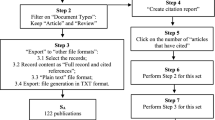Abstract
In order to prevent the formation of a gap between the quality and quantity in Iranian scientific publications, this study makes an effort to analyze Iranian scientific publications indexed on the ISI Web of Science database using quantitative and qualitative scientometrics criteria over a ten year period. As a first step, all Iranian institutes were divided into three categories; universities, research institutes and other organizations. Then they were compared according to quantitative and qualitative criteria. Second, the correlation between the quality and quantity of the publications was measured. The research findings indicated that, according to qualitative criteria (citation, citation impact and percentage of cited documents) there are no meaningful differences among the three groups, while regarding quantitative criterion(number of papers), universities rank higher than the other two groups. The results also indicated that there is a positive and meaningful correlation among qualitative and quantitative criteria in the scholarly scientific publications conducted by Iranian organizations. In other words, in Iranian organizations the quality of publications increases as their quantity increases. The comparison of magnitude of correlation between these two criteria in the three categories reveals the fact that the correlation between number of papers and citations criterion in research institutes is stronger than the other two groups.
Similar content being viewed by others
References
Cameron, B. D. (2005), Trends in usage of ISI bibliometrics data; uses, abuses, and implications, Libraries and the Academy, 1: 105–125.
Etemaad, Sh. et al. (2003), The intellectual structure of science in Iran, Year 2001, Social Science Magazine [in Persian], 21: 219–242.
Garfield, E. (1993), A citationist perspective on science in Taiwan: Most-cited papers, institutions, and authors, 1981–1992, Current Contents, 17: 3–12.
Garfield, E., Science in the ROC and the pacific rim, 1981–1992: A citationist perspective, national science council science and technology information center Third Conference of Science Editors of the ROC (Taipei, ROC, 17 March 1993) (online), Available: http://www.garfield.library.upenn.edu/papers/roc/scienceinroc1993.html, 1993.
Goodall, A. H. (2006), Should top universities be led by top researchers and are they? A citation analysis, Journal of Documentation, 62: 388–411.
Harzing, A. W. (2005), Australian research output in economics and business: High volume, low impact, Australian Journal of Management, 2: 183–199.
Kovac, N, Miak, A. (2004), Author self citation in medical literature, CMAG, 170(13).
Lawani, S. M. (1986), Some bibliometric correlates of quality in scientific research, Scientometrics, 1–2: 13–25.
Liu, N. C., Cheng, Y., Liu, L. (2005), Academic ranking of world universities using scientometrics — A comment to fatal attraction, Scientometrics, 1: 101–109.
Ma, S.-S., Tsay, M.-Y. (2003), The nature and relationship between produvtivity of journals and their citations in semiconductor literature, Scientometrics, 2: 201–222.
Moed, H. F. (2007), UK research assesment exercise: Informed judgments on research quality or quantity? Scientometrics, 11 (Online First)
Moosavi, F. (2003), Studying the possibility of ascending of iran to top ten science producing countries of the world, Rahyaft [in Persian], 30: 79–89.
Moosavi, F. (2004), Scientific production rating in top 50 countries of the world, Rahyaft [in Persian], 32: 37–57.
Osareh, F., Wilson, C. S. (2002), Collaboration in Iranian scientific publications, Libri, 52: 88–98.
Rezaei-Ghalehh, N., Azizi, F. (2007), The impact factor-based quality assessment of biomedical research institutes in Iran: Effect of impact factor normalization by subject, Archives of Iranian Medicine, 2: 182–189.
Smart, J. C., Bayer, A. E. (1986), Author collaboration and impact: Citation rates of singleand multiple authored articles, Scientometrics, 5: 297–305.
The High Council of Cultural Revolution. The committee of scientific and cultural evaluation, Science and Technology Evaluation in Islamic Republic of Iran: First Analysis of Universities and Governmental Research Institutes [in Persian], The High Council of Cultural Revolution, Tehran, 2005.
Author information
Authors and Affiliations
Corresponding author
Rights and permissions
About this article
Cite this article
Hayati, Z., Ebrahimy, S. Correlation between quality and quantity in scientific production: A case study of Iranian organizations from 1997 to 2006. Scientometrics 80, 625–636 (2009). https://doi.org/10.1007/s11192-009-2094-3
Received:
Published:
Issue Date:
DOI: https://doi.org/10.1007/s11192-009-2094-3




